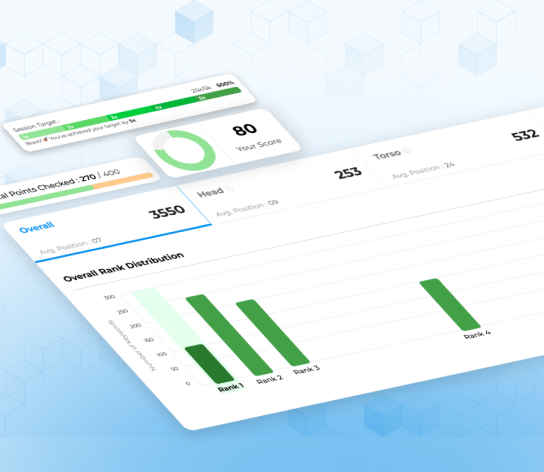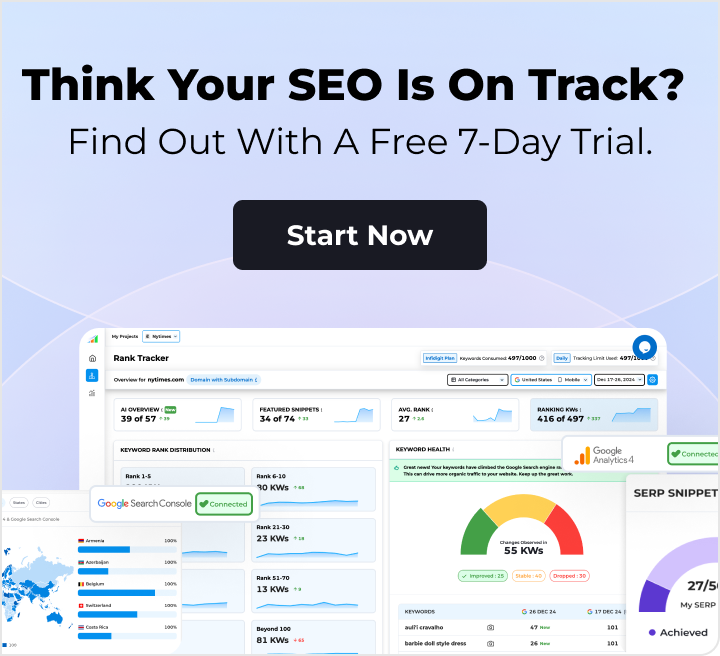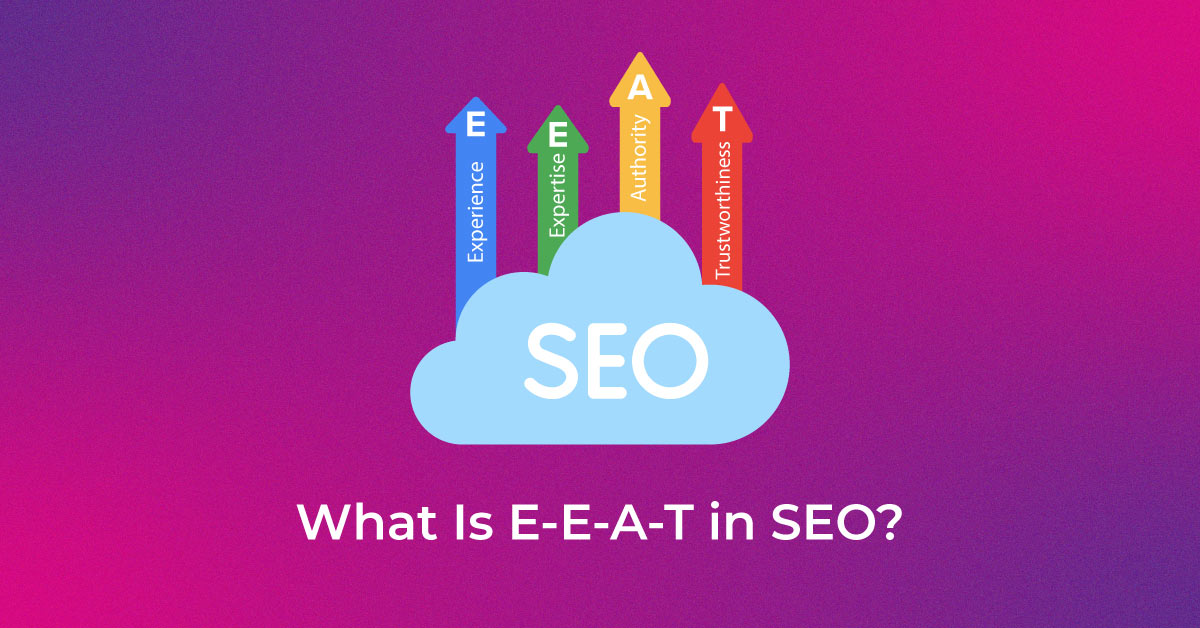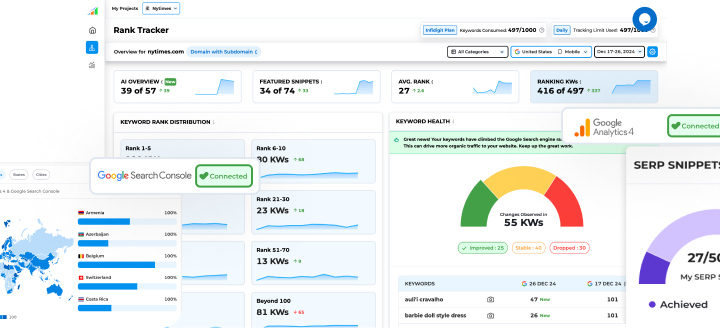Understanding the Essentials of Pricing Strategies
Defining a Pricing Strategy and Its Importance
When you delve into the essentials of pricing strategies, it becomes clear that they are more than just numbers. A pricing strategy entails a systematic approach to determining the value of your product or service in the market. It’s about defining what customers are paying for, the experience they receive, and how they perceive the worth of what they purchase compared to alternatives.
Strategically pricing your offerings is crucial because it not only impacts your profit margins but also signals to customers the positioning of your product in the market. Whether you’re a premium brand or an everyday value provider, your prices communicate your product’s story and underpin its market identity. A well-thought-out pricing strategy harnesses research, competition analysis, and a deep understanding of the customer base, ensuring prices are set optimally to achieve business objectives.
Moreover, your pricing strategy influences how your brand is perceived, can make or break the purchasing decision for the customers, and ultimately plays a vital role in the financial health of your company. If you set the price too high, you may limit your customer base. On the other hand, if prices are too low, you risk undervaluing your product and reducing your profit potential.
Core Objectives: Balancing Profit and Customer Value
Balancing profit and customer value is akin to walking a tightrope; it requires precision and careful consideration. Your pricing strategy should cater to this balance to ensure long-term success. The primary objective is to ensure profitability which forms the lifeblood for any business. It means setting prices at a level that covers the costs of production, delivery, and operations while allocating a suitable margin for profit.
Simultaneously, you must recognize the value provided to customers and align your pricing to reflect this. If customers perceive that the value exceeds the price, they’re likely to feel satisfied, fostering loyalty and potentially increasing customer lifetime value. On the flipside, if the perceived value is less than the cost, they may turn to competitors.
To achieve these objectives, consider:
- Increasing profitability: Setting prices that maximize margins without deterring customers.
- Improving cash flow: Ensuring that the prices yield a steady inflow of cash to fund operations and growth.
- Market penetration: Adopting a price point that allows entry into a market and attracts a large number of customers quickly.
- Expanding market share: Strategically pricing products to outcompete rivals and capture a larger portion of the market.
- Increasing lead conversion: Attracting potential customers with compelling prices and then delivering on value to convert them into buyers.
Remember, your customers have varying levels of price sensitivity and disposable incomes, so their willingness to pay can differ significantly. Your pricing strategy should account for these differences and strive to meet a wide range of customer expectations without compromising on your profitability goals.
Exploring Various Types of Pricing Strategies
Penetration vs. Skimming: Pros and Cons
Penetration and skimming strategy are two contrasting pricing strategies adopted by businesses to achieve different goals upon entering a market or launching a new product. Understand these to select the strategy that aligns best with your objectives and market situation.
Penetration pricing is about setting prices low to quickly attract a significant number of customers and gain market share. It’s an aggressive strategy that works well for businesses looking to establish themselves in a competitive landscape.
Penetration Pros:
- Quickly builds market share.
- Can effectively block competitors or deter new entrants.
- Encourages customers to switch from competitors due to lower prices.
Penetration Cons:
- Initially lower profit margins.
- Risks establishing a low-value perception of the brand.
- Price increases later on may alienate customers acquired through low prices.
Price skimming, conversely, involves setting a high price for a new product initially, and then gradually decreasing it over time. This approach is often used for innovative or luxury products with unique features that justify a premium.
Skimming Pros:
- Allows for recouping of research and development costs sooner with high initial margins.
- Target consumers are less sensitive to price and more focused on novelty or exclusivity.
- Helps segment the market by attracting different customer groups as prices drop.
SkimmingCons:
- This may limit sales volumes initially due to the high price point.
- Attracts competitors who observe the high margins and market potential.
- The effectiveness decreases as the novelty of the product declines over time.
In summary, penetration pricing is excellent for a cost-competitive scenario and aims at volume sales, whereas price skimming seeks to maximize profits in the short term when the offering is unique and competition is limited. Choose penetration to secure a foothold in competitive markets or skimming if your product innovation justifies a premium and can captivate early adopters despite the price tag.
Competitive, Value-Based, and Cost-Plus: Making the Right Choice
Selecting the right pricing strategy between competitive, value-based, and cost-plus requires evaluating your market positioning, understanding customer perception, and determining your business goals.
Competitive Pricing:
Design your prices in response to your competitors’ pricing structures. This approach is common in markets with little differentiation between products.
Pros:
- Helps to stay competitive and relevant in the market.
- Encourages competitive cost control within your business.
Cons:
- Might lead to a price war, eroding profit margins for all players involved.
- Can limit your brand’s ability to differentiate on other factors like quality or service.
Value-Based Pricing:
Set your prices based on the perceived value of your products or services to the customer. This method puts the focus on the benefits and outcomes that your offer provides.
Pros:
- Can lead to higher profit margins because it’s not tied to the cost of the product but its perceived worth.
- Strengthens brand positioning by emphasizing quality and value rather than cost.
Cons:
- Requires solid market research to truly understand customer perceived value.
- May be more challenging to communicate and justify to customers, especially for new entrants.
Cost-Plus Pricing:
Prices are set by adding a standard markup to the cost of the product. This is a straightforward approach to ensure all costs are covered and desired profit margins are met.
Pros:
- Ensures you cover costs and achieve consistent profit margins.
- Simplifies the pricing process and is easy to explain to stakeholders.
Cons:
- Ignores customer’s perceived value, potentially leaving money on the table.
- May not be responsive to market and competitive changes.
Making the right choice depends on multiple factors such as your industry expectations, brand identity, and customer base preferences. You might lean towards competitive pricing in a commoditized market, value-based pricing if your offer stands out with unique features or benefits, or cost-plus pricing if you prefer a more structured approach that guarantees profitability. Each strategy is influenced by your overall marketing strategy, which should be informed by both internal cost structures and external market dynamics.
Consider the following when making your choice:
- Market sensitivity: How do prices affect customer loyalty and acquisition?
- Cost structures: Can you afford to compete on price without affecting quality?
- Differentiation: How unique is your offering compared to the competition?
- Brand positioning: Do you position your brand as a cost-leader or a value-provider?
- Customer insights: Do you have a deep understanding of what your customers value?
Remember, no one-size-fits-all approach exists. Testing and learning from customer feedback and sales data can also guide you in refining your pricing strategy for optimal results. It’s also not unusual for businesses to blend these strategies, tailoring them to fit different segments of their offerings or as part of their pricing life cycle.
Crafting Your Effective Pricing Model
Key Factors to Consider Before Settling on Prices
Before finalizing your pricing, it’s imperative to ponder a multitude of factors that can influence the success of your chosen strategy. Here’s a rundown to ensure you’re equipped with a well-rounded perspective:
- Cost of Goods Sold (COGS): Start by calculating the direct costs of producing your product or delivering your service, ensuring that your prices at least cover these foundational expenses.
- Market Conditions: Assess the economic climate, industry trends, and consumer spending behaviors to anticipate how they might affect what customers are willing to pay.
- Competition: Analyze what your competitors are charging. If you price too high, you risk losing customers; too low, and you might start a price war or devalue your offering.
- Brand Positioning: How are you positioning your brand in the market? Adjust your pricing to reflect whether you’re a luxury brand or a budget-friendly option.
- Perceived Value: Gauge how customers perceive the value of your product or service, and price accordingly. The more unique or beneficial the perceived value, the more pricing power you have.
- Customer Profile: Understand your target customers, including their income levels, preferences, and purchasing behaviors. Tailor your pricing to the demographic you’re aiming to attract.
- Operational Costs: Think beyond COGS to include operational expenses like marketing, salaries, rent, utilities, and technology in your overall pricing structure.
- Profit Goals: Define clear profit objectives, and work backward to determine what pricing will help you achieve those targets.
- Pricing Flexibility: Determine how flexible your prices can be. Can they fluctuate based on demand, time, or customer segment?
- Legal Considerations: Stay informed about pricing laws and regulations, such as price-fixing, price discrimination, and deceptive pricing, to avoid legal pitfalls.
By considering these factors, you develop a price point that not only earns you a profit but also resonates with your market and supports your brand’s broader goals. Remember, pricing shouldn’t be static. Be prepared to adapt as costs, competition, and consumer preferences evolve.
Lastly, your price sends a powerful message about quality and value, so choose anumber that aligns with the story your brand seeks to tell and the experience you promise to deliver.
It’s all about striking that delicate balance: Your prices must be palatable to your customers but also sustainable for your business. Monitor the pulse of all these factors continuously, adjusting your strategy as necessary to maintain a competitive edge.
Industry Insights: Tailored Pricing Models for Different Sectors
When it comes to pricing models, a one-size-fits-all approach is far from ideal. Different industries require a services pricing model and distinct strategies, reflecting the unique challenges and customer expectations within each sector. Here’s how pricing can be tailored to fit a variety of industries:
- Retail: Often combines competitive and psychological pricing strategies to attract customers. Sales and discounts are regularly used to drive traffic and increase turnover.
- SaaS (Software as a Service): Embraces freemium, subscription, or tiered pricing models that allow customers to choose how much to pay based on the features or level of service they want.
- Consulting Services: Project-based or value-based pricing is common, reflecting the customized solutions and expertise provided.
- E-commerce: Dynamic pricing can be particularly effective, adjusting prices in real-time based on demand, competitor prices, or customer behavior.
- Hospitality: Uses a combination of dynamic and value-based pricing, changing rates for rooms or services based on seasons, booking patterns, and perceived value.
- Manufacturing: Cost-plus pricing is often the go-to, ensuring all costs are covered and a standard profit margin is included.
These tailored pricing strategies consider factors like customer price sensitivity, the competitive landscape, and the cost structures inherent in each industry. By selecting an industry-specific product pricing model, businesses place themselves in an advantageous position to maximize revenue and fortify their market share.
Ultimately, any business needs to fully understand the nuances of its own industry, adapt to its dynamics, and choose a pricing model that suits both its business model and its customers’ expectations. This process is guided by a well-crafted digital marketing strategy, which ensures that pricing aligns with customer needs while optimizing profitability.
Advanced Techniques in Pricing
Dynamic Pricing: Agile Responses to Market Changes
Dynamic pricing is a strategy that gives you the agility to respond to market changes in real time. By leveraging technology and market data, prices can be adjusted to reflect current demand, inventory levels, competitor pricing, and other external factors.
The adaptability of dynamic pricing offers several benefits:
- Maximized Revenue: Allows you to capitalize on peak demand periods by raising prices, ensuring you don’t leave money on the table.
- Improved Competitiveness: This keeps you in line with or ahead of competitors, as prices can be adjusted to respond to their changes.
- Inventory Management: Helps in clearing out inventory by lowering prices during low-demand periods, keeping stock fresh.
However, this model also comes with its own set of challenges:
- Consumer Perceptions: Customers may view dynamic pricing as unpredictable or unfair, especially if they notice significant price changes in short durations.
- Technological Dependencies: Revolves around sophisticated algorithms and real-time data analysis, which requires investment in appropriate technologies and expertise.
Dynamic pricing is particularly prevalent in the retailer industry.
- Airlines and Travel: Where ticket prices fluctuate based on factors like booking window, seat availability, and time of travel.
- E-Commerce: Pricing can change several times a day based on competitive pricing, demand, and user browsing history.
- Hospitality: Hotel rates change based on occupancy rates, seasonality, and special events.
To effectively employ dynamic pricing, businesses must invest in robust analytical tools that can swiftly interpret market data to inform pricing decisions. This strategy also demands a careful approach to customer communication to maintain trust and fairness perceptions.
Whether it’s the right approach hinges on your industry, your technological capabilities, and, fundamentally, how well you understand your customers and market fluctuations.
Psychological Pricing: Influencing Customer Perception
Psychological pricing hinges on the concept that certain prices have a psychological impact. Retail pricing at $9.99, as opposed to a round $10, is a classic example of a practice meant to make a price seem lower than it actually is. This strategy is deeply rooted in the belief that these subtleties in pricing can strongly influence consumer behavior.
Important psychological pricing techniques include:
- Charm Pricing: Involves pricing items just below a round number, e.g., $19.99 vs. $20. The ‘charm’ price can make a product appear significantly cheaper.
- Anchor Pricing: Presenting a higher-priced item next to a more affordable option makes the latter seem like a better deal.
- BOGO (Buy One Get One): Encourages customers to feel they are obtaining greater value for money, whether it’s through a 50% off deal or a free product offer.
The benefits of psychological pricing can be significant:
- Perception of Increased Savings: Customers are often drawn to what they perceive as deals and discounts.
- Higher Sales Volume: These strategies can result in increased sales, as they often encourage impulse buying.
- Improved Competitive Edge: When used effectively, it gives the impression of better value, putting you ahead of competitors.
Yet, there are downsides to be mindful of:
- Overuse Diminishing Impact: Customers may become savvy to these tactics over time, reducing their effectiveness.
- Brand Devaluation Risk: It may be risky for premium brands that could see their products’ perceived value decrease.
For businesses to harness the power of psychological pricing effectively, they should integrate it into a comprehensive pricing strategy that respects the brand’s market position and customer expectations. It’s about finding the sweet spot where the price feels right to the customer, and the value is conveyed clearly.
Deciding if psychological pricing suits your business involves considering customer demographics, the positioning of your product or service, and your overall marketing goals. When done transparently and tactfully, psychological pricing can be a powerful tool in influencing customer perception positively and driving sales growth.
Implementing psychological pricing should be an iterative process, where you test prices as part of your product pricing model, gather consumer feedback, and adjust accordingly to optimize the balance between customer appeal and profitability.
Implementing Your Chosen Pricing Strategy
Steps to Roll Out New Prices Seamlessly
Rolling out new prices can be daunting, but with the right strategy, you can make the transition smoothly and maintain customer trust. Here are essential steps to ensure a seamless price update:
- Depth Analysis: Conduct a comprehensive analysis before price changes. Understand the cost structure, market conditions, customer sentiment, and competitor pricing.
- Stakeholder Communication: Keep stakeholders — including employees, partners, and investors — informed about the price changes and reasons behind them, ensuring alignment and support.
- Customer Transparency: Be transparent with customers about price changes. Explain the rationale behind the updates to prevent distrust or backlash.
- Phased Implementation: Consider a gradual rollout to gauge customer reaction and adjust the approach if necessary.
- Customer Support: Enhance customer support to handle queries and potential complaints, reassuring customers during the transition.
- Market Testing: If possible, test the new pricing in a limited market segment before a full-scale rollout.
- Monitor Metrics: Closely monitor sales, customer feedback, and other key performance indicators (KPIs) to understand the impact of the price change.
- Adjustment Readiness: Be prepared to make quick adjustments based on customer response and market feedback.
Following these steps can help mitigate negative customer reactions and maintain business continuity during price changes.
Transparent communication is vital. If customers understand the value they’re getting, they’re more likely to accept price increases. Additional support and a smooth transition period can also help ease any potential friction and encourage customer retention, even in the face of higher prices.
Monitoring and Adjusting Your Strategy Over Time
Monitoring and adjusting your pricing strategy is an ongoing commitment, crucial for maintaining relevance in a constantly evolving market. Here are key practices to ensure your strategy stays effective:
- Regularly Review Prices: Schedule periodic reviews of your pricing strategy to ensure it aligns with factors like inflation, shifts in COGS, evolving market conditions, and competitor moves.
- Track Industry Trends: Stay updated on broader industry trends and economic indicators that may necessitate pricing adjustments.
- Gauge Customer Response: Monitor customer feedback, both qualitative and quantitative, to measure how your prices are being received.
- Analyze Sales Data: Examine sales patterns for insights into how different prices affect volume and profitability.
- A/B Testing: Conduct tests by varying prices for similar products or in different market segments to determine optimal price points.
- Adjust Strategies Based on Performance: If certain products underperform or overperform, don’t hesitate to recalibrate prices accordingly.
- Technological Integration: Use technology, including pricing software and analytics tools, to gather data and obtain actionable insights for strategy tweaking.
Remember, pricing is not a set-it-and-forget-it element of your business. It must be as dynamic as the marketplace in which you operate.
Regardless of industry, staying attuned to your customers, competitors, and costs will support a robust, responsive pricing strategy poised for long-term success.
Technological Tools to Optimize Pricing
Leveraging Analytics for Pricing Decisions
Leveraging analytics for pricing decisions empowers you to base your strategy on data-driven insights rather than intuition. With the right digital marketing tools, you can distill vast amounts of sales and market data to optimize pricing for various scenarios. These tools allow you to analyze customer behavior, track competitive pricing, and adjust your strategy in real-time to maximize profitability and align with market demand.
Here’s what analytics can bring to the table:
- Price Elasticity Understanding: Analytics can reveal how sensitive your customers are to price changes, allowing you to adjust your strategy in a way that maximizes revenue without losing sales.
- Competitor Price Analysis: By examining competitor pricing and market position, you can identify opportunities to differentiate and determine whether to compete on price or value.
- Customer Segmentation: Advanced analytics help to segment your customer base, offering nuanced pricing models tailored to different groups, maximizing profits while meeting diverse needs.
- Historical Sales Data Insights: Analyzing past sales data forecasts potential outcomes of pricing adjustments, reducing risks.
- Demand Forecasting: Predictive analytics can forecast future demand trends, helping to set prices that capitalize on anticipated market movements.
The integration of analytics into your pricing strategy necessitates investment in the right tools and perhaps expert teams to manage and interpret data effectively. The upfront investment often yields returns in the form of refined pricing that better aligns with your goals and market opportunities.
As the use of analytics becomes more sophisticated, including real-time data analysis and the ability to respond quickly to market changes, you can establish a competitive advantage by responding proactively to evolving customer needs and market dynamics.
The Role of AI and Machine Learning in Price Optimization
AI and Machine Learning (ML) have revolutionized price optimization by enabling precise and dynamic pricing models that were once beyond the reach of human capabilities. Here’s how these technologies are making an impact:
- Automated Data Analysis: AI can process massive datasets – including customer behavior, sales patterns, and market trends – to generate actionable insights much faster than traditional methods.
- Predictive Modeling: ML algorithms predict outcomes based on various pricing scenarios, helping businesses anticipate the effects of price changes.
- Personalized Pricing: AI technologies can tailor prices for individual customers or customer segments based on preferences and purchase history, enhancing the customer experience and loyalty.
- Real-Time Pricing Adjustments: AI systems can adjust prices in real-time in response to live market data, maintaining competitiveness and maximizing profit margins.
While the advantages are considerable, the role of AI and ML in price optimization does require careful consideration. Missteps can lead to issues such as customer alienation through perceived unfairness in dynamic or personalized pricing. It’s crucial to balance the efficiencies gained through AI and ML with the need for transparency and fairness in your pricing strategy.
Investing in AI and ML for pricing is a strategic move that can pay dividends through enhanced decision-making, improved customer satisfaction, and ultimately, better financial performance. However, it requires a commitment to up-to-date technology and an ongoing strategy to keep the human touch in your customer relations.
Success Stories: Businesses That Nailed Their Pricing Strategies
Case Study Snapshots: Learning from the Best
To glean insights into successful pricing strategies, looking at case studies from top-performing companies can be quite instructive. Here are a few snapshots that embody effective pricing tactics:
- Case Study: E-commerce Giant Utilizes Dynamic Pricing An e-commerce leader adjusted prices multiple times a day using an AI-based algorithm. They factored in competitor pricing, supply constraints, and demand flux to maximize sales and profit margins.
- Case Study: SaaS Startup Adopts Value-Based Pricing A software startup shifted from a flat-rate pricing model to a value-based pricing structure. By aligning their prices more closely with the perceived value and results delivered to customers, they increased their average deal size significantly.
- Case Study: Retail Chain Implements Psychological Pricing A prominent retail chain employed charm pricing effectively by marking products just below the nearest whole number. This strategy improved their competitive positioning, increased footfall, and enhanced sales volume.
Each case embodies a strategic awareness of market dynamics, customer psychology, and operational efficiency.
By examining such case studies, businesses can distill actionable strategies that resonate with their unique circumstances, ensuring their pricing approach is not only industry-competitive but also innovative in capturing customer interest.
Analyzing High-Performance Pricing Strategies in Action
Analyzing high-performance pricing strategies in action provides a practical framework for businesses to model their own pricing on. These case-based analyses offer insights into the application of theoretical pricing concepts under real-world conditions.
Consider the following elements often seen in high-performing strategies:
- Data-Driven Decision-Making: Organizations harnessing Big Data and analytics to continuously refine prices report greater resilience to market volatility and increased profitability.
- Customer-Centric Approach: Strategies with a clear focus on delivering value to targeted customer segments tend to secure higher customer loyalty and can command premium pricing.
- Adaptability: Companies that adapt their prices in response to market fluctuations, competitor moves, or changes in customer preferences often maintain a competitive edge.
- Transparency and Communication: Transparency in pricing, with clear communication about the value delivered, builds trust and can mitigate potential resistance to price changes.
- Technology Utilization: Use of technologies like AI and Machine Learning not only for price setting but also for providing personalized pricing offers adds a sophisticated edge to pricing strategies.
High-performing pricing strategies are not just about setting the right number; they involve an ecosystem of good practices that include understanding the market, leveraging technology, and placing the customer’s perceived value at the heart of the pricing model.
The long-term goal for any business is to find a pricing approach that is both profitable and sustainable, fostering customer satisfaction and loyalty. Learning from high-performance strategies in action can provide the stepping stones to this end.
Maximizing Profits While Preserving Trust
Striking the Balance: Fair Pricing Tactics
Striking a balance between fair pricing and business objectives can be challenging, but it’s essential for long-term success and customer retention. Here are some tactics to maintain fair pricing:
- Value Correspondence: Ensure your pricing is commensurate with the intrinsic value of the product or service, providing customers with a sense of fairness.
- Cost Transparency: Where possible, explain the costs involved in producing your offerings, which can help justify the price to customers.
- Market Alignment: Align your prices with those in the market for similar offerings, preventing customers from feeling overcharged.
- Dynamic Discounts: Offer discounts based on customer loyalty or order size to reward customers and reinforce the perception of fairness.
- Regular Assessments: Continually assess your pricing against competitors and market conditions to maintain fairness.
Fair pricing is more than a strategy; it’s a principle that can translate into customer trust and loyalty, providing a competitive advantage that is difficult for others to replicate.
Maintain open communication and be ready to adjust your pricing tactics to serve your customers as much as it serves your business, fostering a mutually beneficial relationship.
Avoiding Common Pitfalls in Pricing
In establishing your pricing strategy, being aware of and avoiding common pitfalls is essential. Here are some typical mistakes to steer clear of:
- Underpricing: Don’t undervalue your product or service as it can lead to unsustainable profit margins and may devalue your brand.
- Overpricing: Conversely, setting prices too high can alienate potential customers and reduce your competitive edge.
- Ignoring Market Changes: Failing to respond to market shifts can render your pricing strategy irrelevant over time.
- Cost-Based Pricing Without Market Insight: Solely relying on cost-plus pricing without understanding customer value can result in missed opportunities.
- Lack of Testing: Not testing pricing strategies can lead to avoidable mistakes that could have been identified through market research or A/B testing.
- Inflexibility: Being too rigid in your pricing can cost you customers who find flexible and dynamic pricing models elsewhere.
By navigating around these common issues, you safeguard the profitability, competitiveness, and market fit of your business.
Regular reviews and adaptability are your best defenses against these common traps, keeping your approach both customer-centric and aligned with your go-to-market strategy.
Frequently Asked Questions
What Is the Basic Difference Between Penetration and Skimming Pricing?
Penetration pricing is a strategy where you set a low initial price to quickly draw customers and capture market share. Skimming pricing, on the other hand, involves a skimming strategy of setting a high initial price for a new or innovative product, targeting early adopters willing to pay more before gradually lowering the price. Penetration pricing aims for volume and widespread adoption, while skimming seeks to maximize profits from the outset.
How Do I Know Which Pricing Strategy Is Right for My Business?
Choosing the right pricing strategy involves evaluating your business goals, understanding your target market, analyzing your costs, and monitoring your competition. It’s important to align your pricing with the value you offer, the demand for your product or service, and your overall market positioning. Test different strategies and adapt based on customer response and sales data to find the best fit for your business.
Can You Combine Multiple Pricing Strategies for Your Product or Service?
Yes, businesses can combine multiple pricing strategies to meet various objectives and market conditions. For instance, you might use penetration pricing for market entry and later switch to value-based pricing as your product gains recognition. This blend can accommodate different customer segments, product life cycles, and competitive responses, offering a flexible and responsive approach to pricing.
Popular Searches
How useful was this post?
0 / 5. 0













